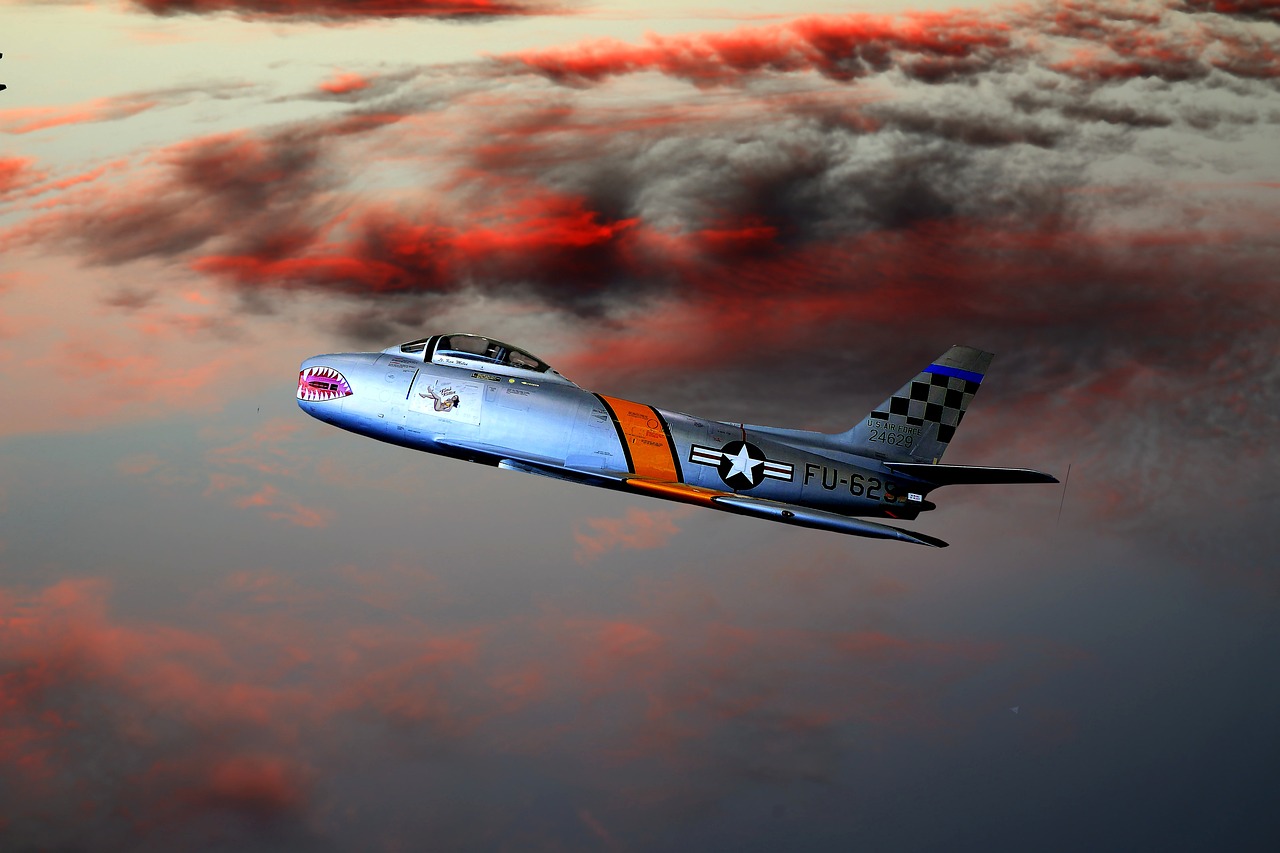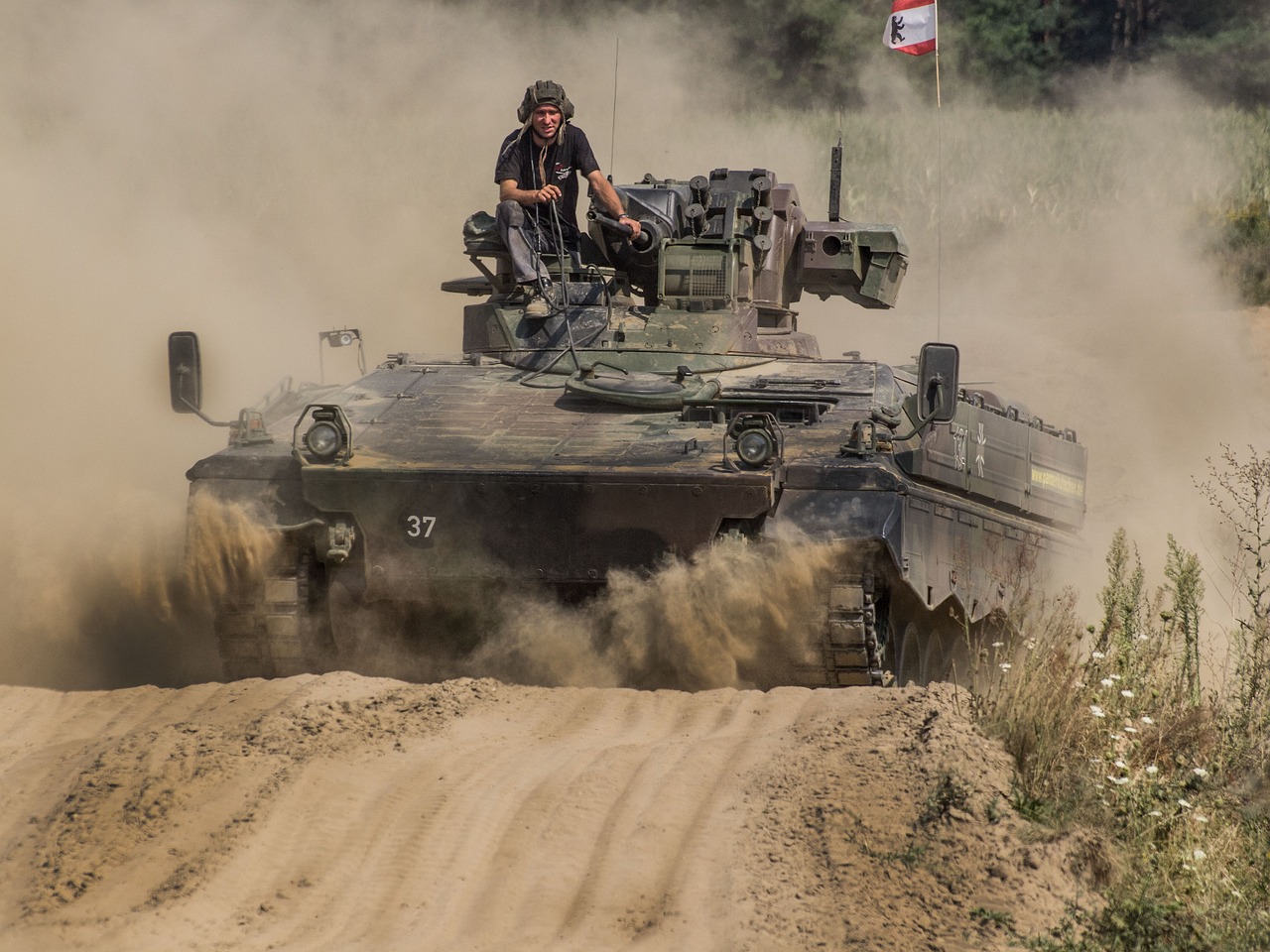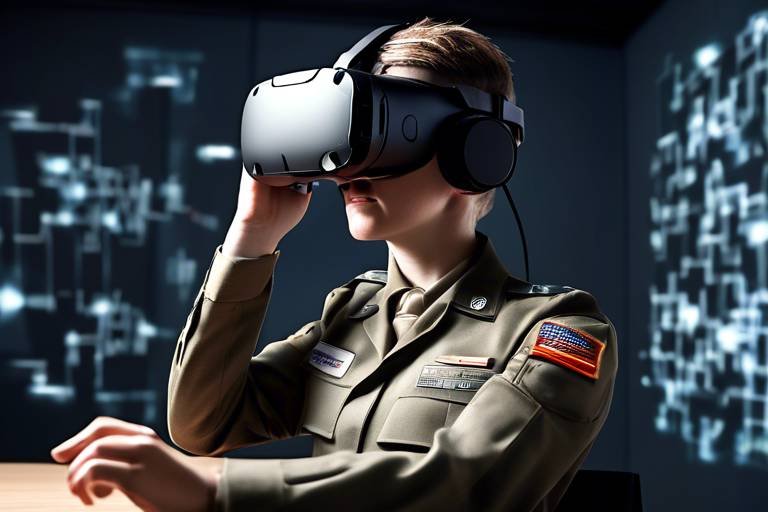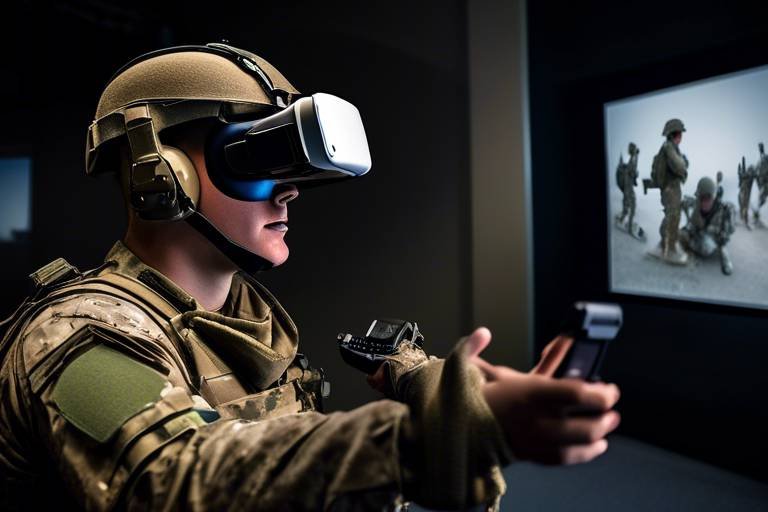Integrating VR Simulations in Military Leadership Development
The landscape of military training is undergoing a revolutionary shift, thanks to the advent of virtual reality (VR) simulations. These advanced technologies are not just a passing trend; they represent a fundamental change in how we prepare our military leaders for the challenges they will face in real-world scenarios. Imagine a world where soldiers can engage in complex combat situations without ever leaving their training facility. This is not science fiction; it’s the reality that VR brings to the table. By immersing military personnel in lifelike environments, they can practice their leadership skills, hone their decision-making abilities, and develop a strategic mindset that is crucial for success in the field.
What makes VR simulations so effective? For starters, they offer an immersive experience that traditional training methods simply cannot match. When military leaders step into a VR environment, they are not just observing a scenario; they are actively participating in it. This hands-on approach allows them to experience the consequences of their decisions in real-time, fostering a deeper understanding of the complexities involved in military operations. The ability to simulate various scenarios—from managing a crisis to executing a strategic plan—enables leaders to practice their skills in a safe yet realistic setting.
Moreover, the adaptability of VR technology means that training can be tailored to meet the specific needs of military organizations. Whether it's a small unit preparing for a specific mission or an entire battalion undergoing leadership development, VR simulations can be customized to create relevant and challenging scenarios. This flexibility not only enhances the learning experience but also ensures that leaders are prepared for the diverse challenges they may encounter in their careers.
However, the integration of VR simulations into military leadership development is not without its challenges. As with any innovative approach, there are hurdles to overcome, including high costs, technological limitations, and the need for specialized training. Understanding these challenges is crucial for military organizations looking to implement VR effectively. By addressing these issues head-on, they can harness the full potential of this transformative technology and create a generation of leaders who are better equipped to handle the complexities of modern warfare.
One of the most significant advantages of VR simulations is their ability to enhance learning outcomes. The immersive nature of VR allows military leaders to engage in realistic training scenarios that closely mimic actual combat situations. This level of engagement leads to better retention of information and skills, making the training process far more effective than traditional methods.
Additionally, VR simulations foster better decision-making and strategic thinking. Leaders can experiment with different strategies and see the outcomes of their decisions in a controlled environment. This trial-and-error approach encourages creativity and innovation, essential traits for any military leader. As they navigate through various scenarios, they learn to think critically and adapt their strategies in response to evolving situations.
While the benefits of VR simulations are clear, integrating this technology into military training programs presents several challenges. One of the primary concerns is the cost associated with acquiring and maintaining VR technologies. Budget constraints can hinder the ability to implement these advanced systems effectively. Therefore, a thorough analysis of the financial implications is necessary to ensure that investments in VR training yield substantial returns.
The financial investment required for VR technology can be significant. Military organizations must consider not only the initial purchase price of VR equipment but also ongoing maintenance and software updates. A careful analysis of budget allocations is essential to determine the potential return on investment in leadership development.
Effective budgeting strategies are crucial for integrating VR into military training programs. This involves:
- Assessing current training needs and aligning them with VR capabilities.
- Identifying potential funding sources, including government grants and partnerships.
- Establishing a phased implementation plan to spread costs over time.
Understanding the long-term financial implications of adopting VR technology is crucial. Military organizations must justify initial expenditures by demonstrating how VR training enhances leadership development, reduces training time, and ultimately leads to more effective military operations.
Current technological constraints can hinder the effectiveness of VR simulations. Issues such as hardware limitations, software bugs, and user experience can impact the realism of the training environment. As technology continues to advance, these limitations will likely diminish, but for now, military organizations must navigate these challenges to ensure effective training outcomes.
One of the most compelling aspects of VR simulations is their ability to enhance decision-making skills. In the heat of battle, military leaders must make quick, informed decisions that can mean the difference between success and failure. VR simulations provide unique opportunities for leaders to develop these critical skills in a controlled environment.
Engaging in scenario-based training through VR allows leaders to confront diverse challenges. From managing a team during a crisis to executing complex maneuvers, leaders can practice making informed decisions under pressure. This experience is invaluable, as it prepares them for the unpredictability of real-life military operations.
Another significant advantage of VR simulations is the availability of real-time feedback mechanisms. Military leaders can assess their performance, identify areas for improvement, and refine their leadership skills effectively. This continuous feedback loop ensures that they are always learning and evolving, which is crucial in the fast-paced world of military operations.
Q: What are the primary benefits of using VR simulations in military training?
A: VR simulations enhance learning outcomes, improve decision-making skills, and provide immersive experiences that prepare military leaders for real-world challenges.
Q: Are there significant costs associated with implementing VR technology?
A: Yes, the initial investment for VR equipment and ongoing maintenance can be substantial, requiring careful budgeting and analysis of potential returns.
Q: How do VR simulations improve decision-making skills?
A: They allow leaders to practice making decisions in realistic scenarios, providing immediate feedback that helps refine their strategic thinking abilities.

Benefits of VR Simulations
Virtual reality (VR) simulations are revolutionizing the way we approach military leadership development. Imagine stepping into a world where you can face high-pressure scenarios without any real-world consequences. That’s the essence of VR training—immersive experiences that enhance learning outcomes. With VR, military leaders can practice real-world situations in a safe environment, allowing them to hone their skills effectively. The ability to simulate complex scenarios means that leaders are not just learning theoretically; they are engaging in a dynamic learning process that fosters better decision-making and strategic thinking.
One of the most significant advantages of VR simulations is the immersive learning experience. Unlike traditional training methods, which often involve passive learning, VR places leaders in the driver’s seat. They can interact with their environment, make decisions, and see the consequences of their actions in real-time. This level of engagement is critical, as it promotes deeper understanding and retention of skills. When leaders can visualize and practice their responses to various situations, they become more adept at handling real-life challenges. It’s akin to learning to ride a bike—once you’ve felt the balance and the motion, it sticks with you.
Moreover, VR simulations allow for repeated practice in a controlled setting. Leaders can engage in the same scenario multiple times, refining their strategies and responses each time. This repetition is key to mastery. For instance, consider a scenario where a leader must navigate a crisis situation. With VR, they can practice this scenario over and over, tweaking their approach based on feedback and outcomes. This iterative process not only builds confidence but also enhances adaptability—an essential trait for any military leader.
Additionally, VR simulations can be tailored to meet specific training needs. Whether it’s crisis management, tactical decision-making, or team leadership, VR can create customized scenarios that reflect the unique challenges faced by military leaders. This flexibility ensures that training is relevant and applicable, making the learning experience even more impactful.
Another noteworthy benefit is the ability to conduct team-based training in a virtual environment. Leaders can collaborate with their peers, engage in strategic discussions, and practice teamwork in scenarios that require collective decision-making. This not only fosters camaraderie but also emphasizes the importance of communication and collaboration in military operations. The experience of working together in a simulated environment can translate into better performance in real-world missions.
| Benefits of VR Simulations | Description |
|---|---|
| Immersive Learning Experience | Engages leaders in realistic scenarios, enhancing skill retention. |
| Repeated Practice | Allows for iterative learning and strategy refinement. |
| Customized Scenarios | Tailors training to specific challenges faced by military leaders. |
| Team-Based Training | Encourages collaboration and communication among leaders. |
In conclusion, the integration of VR simulations into military leadership training is not just a passing trend; it’s a transformative approach that enhances learning outcomes significantly. The immersive, engaging, and adaptable nature of VR training equips military leaders with the skills they need to thrive under pressure. As we continue to explore the potential of this technology, it’s clear that VR is paving the way for a new era in military training.

Challenges in Implementation
While the potential of VR technology in military training is immense, the road to successful integration is riddled with challenges that cannot be overlooked. One of the most pressing issues is the high costs associated with acquiring and maintaining VR systems. These expenses encompass not only the initial purchase of hardware and software but also ongoing maintenance, updates, and technical support. Military organizations must conduct a thorough analysis of their budgets to determine how much they can allocate to VR training without compromising other essential areas.
Moreover, the technological limitations of current VR systems can pose significant hurdles. For instance, many existing simulations lack the realism that is crucial for effective training. If the virtual environment doesn’t closely mimic real-life situations, it can lead to misconceptions and ineffective learning. Additionally, the user experience can be hindered by issues such as lag, poor graphics, or inadequate sensory feedback, which can diminish the overall impact of the training.
Another major challenge is the need for specialized training for personnel who will be using these VR systems. Just like a pilot must undergo extensive training to operate an aircraft, military leaders need to familiarize themselves with the VR technology to maximize its benefits. This requirement can lead to an increased demand for resources and time, which might not be readily available in a fast-paced military environment.
To illustrate the challenges of integrating VR into military training, consider the following table that outlines key issues and their potential impacts:
| Challenge | Impact |
|---|---|
| High Costs | Budget constraints may limit the ability to invest in advanced VR technologies. |
| Technological Limitations | Reduced training effectiveness due to lack of realism and user experience issues. |
| Need for Specialized Training | Increased resource allocation and time commitment for personnel training. |
In conclusion, while the integration of VR simulations into military leadership development presents a wealth of opportunities, it is essential to navigate the accompanying challenges carefully. Addressing these issues through strategic planning and resource allocation will be crucial for realizing the full potential of VR in enhancing military training.
- What are the main benefits of using VR simulations in military training? VR simulations provide immersive experiences that enhance learning outcomes, allowing military leaders to practice real-world scenarios in a safe environment.
- How can military organizations overcome the high costs associated with VR technology? Careful budgeting and analysis of potential returns on investment can help justify the initial expenditures.
- What kind of training is required for personnel to use VR simulations effectively? Specialized training programs are necessary to ensure that users can navigate and utilize the technology to its fullest potential.
- How do technological limitations affect VR training? Limitations such as lag, poor graphics, and inadequate sensory feedback can hinder the realism and effectiveness of training simulations.

Cost Considerations
When diving into the world of virtual reality (VR) simulations for military leadership development, one cannot overlook the substantial financial implications. The initial investment can be daunting, and it’s essential to approach this with a clear understanding of both immediate costs and long-term benefits. Think of it like purchasing a high-quality tool; while the upfront price might be steep, the value it brings over time can far outweigh those initial expenses.
To put it into perspective, let’s break down some of the key cost factors associated with implementing VR technology in military training:
| Cost Factor | Description |
|---|---|
| Hardware | Investment in VR headsets, computers, and other necessary equipment. |
| Software Development | Creating or purchasing tailored VR simulations that meet specific training needs. |
| Maintenance | Ongoing costs for software updates, hardware repairs, and system upgrades. |
| Training Personnel | Costs associated with training staff to effectively utilize VR technology. |
As shown in the table above, the costs can accumulate quickly. But here’s the kicker: if done right, the potential return on investment (ROI) can be significant. Imagine a scenario where military leaders are better prepared for real-world challenges, leading to fewer mistakes, enhanced team cohesion, and ultimately, more successful missions. The cost of a failed operation can far exceed the investment in training.
Moreover, effective budgeting strategies are vital. Military organizations must analyze their current training expenditures and compare them against the projected costs of integrating VR. This isn’t just about crunching numbers; it’s about making strategic decisions that will shape the future of military leadership.
In addition, understanding the long-term financial impact is crucial. While the upfront costs may be high, the sustained benefits—such as improved operational efficiency and reduced training times—can lead to significant savings over time. It’s akin to planting a tree; the initial effort may seem substantial, but the shade and fruits it provides in the future are worth the investment.
In conclusion, while the costs associated with integrating VR simulations into military training programs might seem overwhelming, a thorough analysis and strategic approach can reveal the potential for high returns. Careful budgeting and a focus on long-term benefits can help military organizations justify these expenditures, ultimately leading to a more effective and prepared leadership force.
- What are the main costs associated with VR training? The primary costs include hardware, software development, maintenance, and personnel training.
- How can military organizations justify the initial investment in VR? By analyzing the potential long-term benefits and ROI, such as improved decision-making and reduced operational costs.
- Are there alternatives to VR training? While there are traditional training methods, VR offers unique immersive experiences that enhance learning outcomes significantly.

Budgeting for VR Training
When it comes to integrating Virtual Reality (VR) training into military programs, the financial aspect cannot be overlooked. Effective budgeting strategies are essential to ensure that resources are allocated efficiently, maximizing the benefits derived from this innovative approach. The first step in this process is to conduct a thorough cost analysis. This involves understanding the initial investment required for VR technology, including hardware, software, and ongoing maintenance costs. Additionally, it’s crucial to factor in the costs associated with training personnel to use this technology effectively.
Moreover, military organizations must consider the potential return on investment (ROI) that VR training can provide. This might include improved training outcomes, enhanced leadership skills, and increased operational efficiency. By comparing these potential benefits against the costs, military leaders can make informed decisions about their training budgets. For instance, if investing in VR training leads to a 20% improvement in decision-making speed and accuracy during real missions, that could significantly outweigh the initial costs.
To help visualize the budgeting process, let’s break down some key components that should be included in the budget for VR training:
| Budget Component | Estimated Cost |
|---|---|
| VR Hardware (Headsets, Sensors) | $50,000 |
| VR Software Development | $30,000 |
| Maintenance and Updates | $10,000 per year |
| Personnel Training | $15,000 |
| Total Estimated Cost | $105,000 |
In addition to the direct costs, military organizations should also consider the long-term financial impact of VR training. This includes assessing how the investment will pay off over time. For example, if VR training leads to fewer mistakes in the field, this could result in lower operational costs and potentially save lives. Thus, understanding the long-term benefits is crucial for justifying the initial expenditures.
Ultimately, budgeting for VR training is not just about crunching numbers; it’s about envisioning a future where military leaders are equipped with the skills necessary to make critical decisions in high-pressure situations. With careful planning and a clear understanding of both costs and benefits, military organizations can create a robust training program that leverages the transformative power of VR technology.
- What is the primary benefit of using VR in military training?
VR provides immersive experiences that enhance learning outcomes, allowing military leaders to practice real-world scenarios in a safe environment. - Are there any hidden costs associated with VR training?
Yes, aside from the initial investment, there are ongoing maintenance and personnel training costs to consider. - How does VR improve decision-making skills?
VR simulations allow leaders to engage in complex scenarios that require quick thinking and strategic planning, thereby honing their decision-making abilities.

Long-term Financial Impact
When considering the integration of VR technology into military training programs, it's essential to look beyond the initial costs and examine the long-term financial implications. While the upfront investment may seem daunting, understanding how these costs translate into sustained benefits can provide a clearer picture of the return on investment (ROI).
One of the most significant aspects of the long-term financial impact is the potential for cost savings. Traditional training methods often involve extensive resources, including personnel, equipment, and travel expenses. In contrast, VR simulations can drastically reduce these costs by providing a controlled environment where training can occur repeatedly without the need for physical resources. For instance, consider the following:
| Traditional Training Costs | VR Training Costs |
|---|---|
| Travel Expenses | Minimal |
| Equipment Maintenance | Lower Maintenance Costs |
| Personnel Hours | More Efficient Use of Time |
Moreover, VR training can lead to enhanced retention of skills and knowledge among military leaders. This improvement can reduce the need for frequent retraining, ultimately saving money over time. When military leaders are better prepared, they are more likely to respond effectively in real-world scenarios, potentially reducing costs associated with operational failures.
Another vital consideration is the impact on recruitment and retention. By offering cutting-edge training experiences, military organizations can attract and retain top talent. In a competitive job market, the ability to provide advanced training opportunities can make a significant difference. This factor not only enhances the organization's reputation but also contributes to a more skilled and capable workforce, which, in turn, can lead to better operational outcomes.
However, it’s crucial to conduct a thorough cost-benefit analysis to justify the initial expenditures. Military organizations should consider not just the immediate costs but also the potential for long-term savings and improved performance. By evaluating factors such as increased efficiency, reduced training time, and enhanced skill retention, leaders can better understand the overall financial landscape.
In conclusion, while the initial financial outlay for VR technology may raise eyebrows, the long-term financial impact can be profoundly positive. By embracing this innovative approach to training, military organizations position themselves for enhanced operational effectiveness and significant cost savings over time. The key lies in a comprehensive understanding of both the costs and the potential benefits, ensuring that resources are allocated wisely to maximize the impact of VR training on military leadership development.
- What are the main advantages of using VR in military training? VR provides immersive experiences that enhance learning outcomes, allowing for safe practice of real-world scenarios.
- How does VR training impact decision-making skills? VR simulations help leaders develop critical decision-making skills by exposing them to complex scenarios.
- What are the cost considerations for implementing VR training? The initial investment can be high, but potential long-term savings and improved performance can justify the costs.
- Is specialized training required to use VR technology effectively? Yes, specialized training is often necessary to ensure that personnel can utilize VR simulations to their full potential.

Technological Limitations
When we talk about the integration of Virtual Reality (VR) in military training, it's essential to recognize the that can impact its effectiveness. While VR has the potential to revolutionize how military leaders are trained, several factors can hinder its implementation and overall user experience. One of the primary concerns is the realism of the simulations. If the virtual environment does not accurately reflect real-world scenarios, it can lead to a disconnect between training and actual combat situations. Imagine trying to prepare for a high-stakes mission using a simulation that feels more like a video game than a battlefield; this could significantly undermine the training's value.
Another challenge lies in the hardware and software requirements needed to run advanced VR simulations. Many military facilities may not have the necessary infrastructure to support high-quality VR technology. This could lead to inconsistent training experiences across different units, where some leaders might benefit from state-of-the-art simulations while others are stuck with outdated systems. The disparity in technology can create a gap in leadership skills, ultimately affecting team cohesion and performance during critical missions.
Moreover, the learning curve associated with using VR technology can be steep. Not all personnel are tech-savvy, and the need for specialized training to effectively use VR simulations can be a barrier to implementation. If military leaders are not comfortable navigating the virtual environments, the training sessions may end up being counterproductive. It’s like asking a seasoned pilot to fly a new aircraft without proper instruction; the results could be disastrous.
Finally, maintenance and updates of the VR systems are crucial for sustained effectiveness. Technology evolves rapidly, and what might be cutting-edge today could become obsolete tomorrow. Military organizations need to commit to regular updates and maintenance, which can be both time-consuming and costly. Without ongoing support, the initial investment in VR technology might not yield the anticipated long-term benefits.
In summary, while VR has the potential to enhance military leadership training significantly, pose considerable challenges. Addressing these limitations requires a comprehensive approach, including investment in infrastructure, ongoing training for personnel, and a commitment to maintaining and updating the technology. Only then can we fully harness the power of VR to develop effective military leaders capable of making critical decisions under pressure.
- What are the primary benefits of using VR in military training?
VR offers immersive experiences that enhance learning outcomes, allowing military leaders to practice real-world scenarios in a safe environment. - What are the costs associated with implementing VR technology?
The financial investment can be significant, necessitating careful analysis of budget allocations and potential return on investment. - How does VR improve decision-making skills?
VR simulations provide unique opportunities for leaders to confront diverse challenges, improving their ability to make informed decisions under pressure. - What are the common technological limitations?
Challenges include realism of simulations, hardware and software requirements, learning curves, and maintenance needs.

Enhancing Decision-Making Skills
In the fast-paced world of military operations, the ability to make swift, informed decisions can mean the difference between success and failure. Virtual Reality (VR) simulations are revolutionizing how military leaders hone these critical decision-making skills. Imagine stepping into a hyper-realistic environment where every choice you make has immediate consequences. This immersive experience not only enhances learning but also prepares leaders to face real-life challenges with confidence.
One of the standout features of VR simulations is their capacity for scenario-based training. By engaging leaders in a variety of simulated situations—from navigating complex tactical maneuvers to managing unexpected crises—VR allows them to practice decision-making in a controlled yet realistic setting. For instance, a leader might find themselves leading a squad through a hostile environment while under time constraints, forcing them to assess risks and make quick decisions. This type of training replicates the pressure of actual combat scenarios, thereby sharpening their instincts and improving their strategic thinking capabilities.
Moreover, the feedback mechanisms integrated into VR simulations are invaluable. After each training session, participants receive real-time feedback on their performance. This immediate response allows military leaders to reflect on their decisions, understand the rationale behind their outcomes, and identify areas for improvement. For example, if a leader chooses a particular route during a mission simulation that leads to a setback, the system can provide insights into alternative strategies that could have been more effective. This iterative process not only enhances their decision-making skills but also fosters a culture of continuous learning and adaptation.
To illustrate the impact of VR simulations on decision-making, consider the following table that compares traditional training methods with VR-enhanced training:
| Aspect | Traditional Training | VR-Enhanced Training |
|---|---|---|
| Realism | Limited; often based on theoretical scenarios | Highly immersive; replicates real-world conditions |
| Feedback | Delayed; often provided after the exercise | Immediate; allows for instant reflection and adjustment |
| Engagement | Passive; relies on lectures and discussions | Active; participants are fully involved in the simulation |
| Adaptability | Difficult to modify scenarios on-the-fly | Flexible; scenarios can be quickly adjusted based on performance |
As military leaders navigate the complexities of modern warfare, the ability to adapt and make quick decisions is more crucial than ever. VR simulations not only provide a platform for practicing these skills but also foster an environment where leaders can experiment with different strategies without the fear of real-world repercussions. This freedom to explore various outcomes enables them to build a robust decision-making framework that can be applied in high-stakes situations.
In conclusion, enhancing decision-making skills through VR simulations is not just a trend; it's a necessity for the future of military leadership. By immersing leaders in realistic scenarios, providing immediate feedback, and allowing for experiential learning, VR technology is paving the way for more effective and adaptable military leaders. As we continue to embrace these innovative training methods, the potential for improved outcomes on the battlefield becomes increasingly promising.
- What are VR simulations? VR simulations are immersive training environments that replicate real-world scenarios, allowing users to practice skills in a safe and controlled setting.
- How do VR simulations enhance decision-making? They provide realistic scenarios that challenge leaders to make quick, informed decisions while receiving immediate feedback on their performance.
- Are VR simulations expensive to implement? While the initial investment can be significant, the long-term benefits in leadership development and operational effectiveness can justify the costs.
- Can VR training be tailored to specific military needs? Yes, VR simulations can be customized to address specific scenarios and challenges relevant to different military branches and missions.

Scenario-Based Training
Scenario-based training through virtual reality (VR) is revolutionizing how military leaders prepare for real-world challenges. Imagine stepping into a lifelike environment where you can face the chaos of battle or the complexities of a diplomatic negotiation without any real-world consequences. This immersive experience allows leaders to practice their decision-making skills in ways that traditional training methods simply cannot replicate. With VR, military personnel can engage in dynamic scenarios that require quick thinking and strategic planning, all while receiving immediate feedback on their performance.
One of the most exciting aspects of scenario-based training is its ability to replicate a multitude of situations. Whether it's a high-stakes combat mission or a humanitarian crisis, VR can simulate these environments with astonishing realism. For example, a leader might find themselves navigating through a hostile territory while managing their troops and resources. This type of training not only enhances their situational awareness but also prepares them for the unpredictability of real-life operations.
Moreover, the adaptability of VR scenarios means that each training session can be tailored to the specific needs of the unit or individual. This customization is crucial because it allows leaders to confront unique challenges that they may face in their particular roles. As they progress, they can tackle increasingly complex scenarios, enhancing their ability to make informed decisions under pressure. This iterative process of learning through practice is akin to a musician honing their skills through repeated performances, each time striving for greater mastery.
Another significant benefit of scenario-based training is the opportunity for collaborative exercises. Military leaders can engage in joint training exercises with other units, fostering teamwork and communication. In a VR environment, they can coordinate their actions in real time, learning to rely on each other’s strengths while developing a cohesive strategy. This collaboration is essential because, in actual missions, success often hinges on the ability to work seamlessly with others.
To illustrate the effectiveness of scenario-based training, consider the following table that outlines key advantages:
| Advantage | Description |
|---|---|
| Realism | Provides lifelike simulations that closely mimic real-world situations. |
| Adaptability | Customizable scenarios tailored to specific training objectives and challenges. |
| Immediate Feedback | Allows for real-time assessment of decision-making and leadership skills. |
| Collaboration | Encourages teamwork and communication through joint training exercises. |
In conclusion, scenario-based training in VR is not just an innovative tool; it is a transformative approach that prepares military leaders for the complexities of modern warfare and crisis management. By immersing them in realistic, high-pressure situations, we are equipping them with the skills necessary to lead effectively when it matters most. The future of military training is here, and it is more engaging and effective than ever.
- What are the main benefits of VR in military training? VR enhances realism, adaptability, and provides immediate feedback, making training more effective.
- How does scenario-based training improve decision-making? It allows leaders to practice in high-pressure situations, honing their ability to make informed choices quickly.
- Are there any drawbacks to using VR in military training? Yes, challenges include high costs, technological limitations, and the need for specialized training.

Feedback and Assessment
In the realm of military training, real-time feedback is not just a luxury; it's a necessity. VR simulations revolutionize how military leaders assess their performance during training exercises. Imagine being in a high-stakes situation where every decision counts, and having the ability to receive immediate feedback on your actions. This instant response helps leaders understand what worked, what didn't, and why. Such insights are invaluable for refining their leadership skills and enhancing their overall effectiveness.
One of the standout features of VR simulations is their capability to provide objective assessments. Unlike traditional training methods, where feedback can be subjective and influenced by personal biases, VR technology offers data-driven evaluations. For instance, a leader can review their decision-making process through recorded simulations, analyzing their choices against established benchmarks. This level of scrutiny enables military personnel to identify patterns in their behavior, which can be crucial for personal development.
Moreover, the immersive nature of VR allows for a variety of scenarios to be replayed. Leaders can engage in the same simulation multiple times, each time receiving tailored feedback based on their performance. This iterative approach not only reinforces learning but also boosts confidence. As they experience different outcomes based on their decisions, they become more adept at navigating complex situations. In essence, VR simulations create a safe space for experimentation, where leaders can learn from their mistakes without the risk of real-world consequences.
Furthermore, feedback mechanisms in VR can include peer reviews and assessments from instructors, adding another layer of depth to the evaluation process. For instance, after completing a simulation, leaders might participate in a debriefing session where they discuss their experiences with peers and mentors. This collaborative environment fosters a culture of continuous improvement, encouraging leaders to share insights and learn from one another.
To illustrate the impact of feedback and assessment in VR training, consider the following table that highlights key components:
| Component | Description | Benefits |
|---|---|---|
| Real-Time Feedback | Immediate insights during simulations. | Enhances learning and decision-making. |
| Objective Assessments | Data-driven evaluations of performance. | Reduces bias, improves accuracy of feedback. |
| Iterative Learning | Replaying scenarios for skill refinement. | Boosts confidence and adaptability. |
| Collaborative Debriefing | Peer and mentor discussions post-simulation. | Encourages shared learning and growth. |
In conclusion, the integration of feedback and assessment mechanisms within VR simulations provides military leaders with an unprecedented opportunity to enhance their skills. By embracing this technology, they can cultivate a mindset of continuous improvement, ultimately leading to more effective leadership in real-world scenarios.
- What are VR simulations? VR simulations are immersive training environments that use virtual reality technology to replicate real-world scenarios.
- How does feedback work in VR training? Feedback in VR training is provided in real-time, allowing participants to assess their performance immediately after completing scenarios.
- Can VR simulations replace traditional training methods? While VR simulations offer unique benefits, they are best used in conjunction with traditional training methods to create a comprehensive learning experience.
- What are the costs associated with implementing VR training? The costs can vary significantly depending on the technology used, but careful budgeting can help organizations maximize their investment.
Frequently Asked Questions
- What are the main benefits of using VR simulations in military leadership training?
VR simulations provide immersive experiences that significantly enhance learning outcomes. They allow military leaders to practice real-world scenarios in a safe environment, fostering better decision-making and strategic thinking skills. By engaging in realistic simulations, leaders can develop critical skills without the risks associated with actual combat training.
- What challenges might arise when implementing VR technology in military training?
Integrating VR into military training can pose several challenges, including high costs, technological limitations, and the need for specialized training. Organizations must carefully consider these factors to ensure effective implementation and maximize the benefits of VR simulations.
- How can military organizations effectively budget for VR training?
Effective budgeting strategies are crucial for integrating VR into military training programs. Organizations should analyze their budget allocations, assess potential returns on investment, and prioritize resources to ensure that VR training is both feasible and beneficial for leadership development.
- What are the long-term financial implications of adopting VR technology?
Understanding the long-term financial impact of adopting VR technology is essential for military organizations. They need to justify initial expenditures and assess the sustained benefits that VR training can provide in developing effective leaders over time.
- How do VR simulations enhance decision-making skills for military leaders?
VR simulations create unique opportunities for military leaders to confront diverse challenges, which improves their ability to make informed decisions under pressure. By engaging in scenario-based training, they can refine their strategic thinking capabilities and better navigate complex situations.
- What role does feedback play in VR training for military leaders?
Real-time feedback mechanisms in VR simulations are vital for military leaders to assess their performance. This immediate feedback allows them to identify areas for improvement and refine their leadership skills effectively, ensuring continuous growth and development.



















